265 vs 285 Tires: Learn About These 9 Differences Before Buying!
Are you confused about which tires to choose for your vehicle? Don’t worry, this comparison article on 265 vs 285 tires is here to help you out. We understand that when it comes to changing your car’s tires, there are a few important things to consider including size, speed rating, and load index. These factors play a crucial role in ensuring optimal performance, safety, and fuel efficiency.
Read on to gain in-depth insights into the 265 and 285 tire series, their key differences, and their usage. Let’s dive into the details.
Table of Contents
Distinctions Between 265 and 285 Tires: Which Tire Size to Use?
Understanding the difference between these car tires is very simple. A 265 tire measures 265 millimeters from one side to the other, while its counterpart measures 285 millimeters. Now, moving on to the benefits of each tire size, The 265 is:

- Affordable,
- Efficient,
- Comfortable,
- Quieter.
Moreover, it also provides better traction in certain conditions including rainy, slushy, and snowy conditions.
On the other hand, 285 is a good choice for summer tires and excel in:
- Handling,
- Stability,
- Dry Traction,
- Load Capacity,
- Weight Distribution.
When choosing the right tire for your vehicle, it’s important to consider preferences and the specific needs of your car. Let’s learn more about the tires below:
265 vs 285 Tires: The Ultimate Car Tires Comparison
We will now dive into a detailed comparison between 265 vs 285 tires to help you make an informed decision for your vehicle. So, let’s explore the detailed comparison table between these two car tires.
Parameter | 265 75R16 | 285 75R16 |
Section Width: | 10.6 inch | 11.2 inch |
Overall Wheel Diameter: | 31.6 inch | 32.8 inch |
Circumference: | 99.4 inch | 103.1 inch |
Revs Per KM: | 638 | 615 |
Sidewall Height: | 7.8 inch | 8.4 inch |
Aspect Ratio: | 75 | 75 |
Tire Width: | 265 mm | 285 mm |
Overall Width: | Narrowest Tire | Narrower Tire |
Gas Mileage: | Higher | Lower |
Carload: | Medium Load | Heaviest Load |
Handling: | Good | Best |
A Deep Dive Into 9 Separate Parameters
Here, we will have a look into a comprehensive comparison of 265 and 285 tires across various parameters to provide you with a more detailed understanding of their differences. By exploring each section thoroughly, we can identify the winner for each category and help you choose the best pick.
1. Width
Tire width plays a crucial role in:
- Stability
- Traction
- Handling
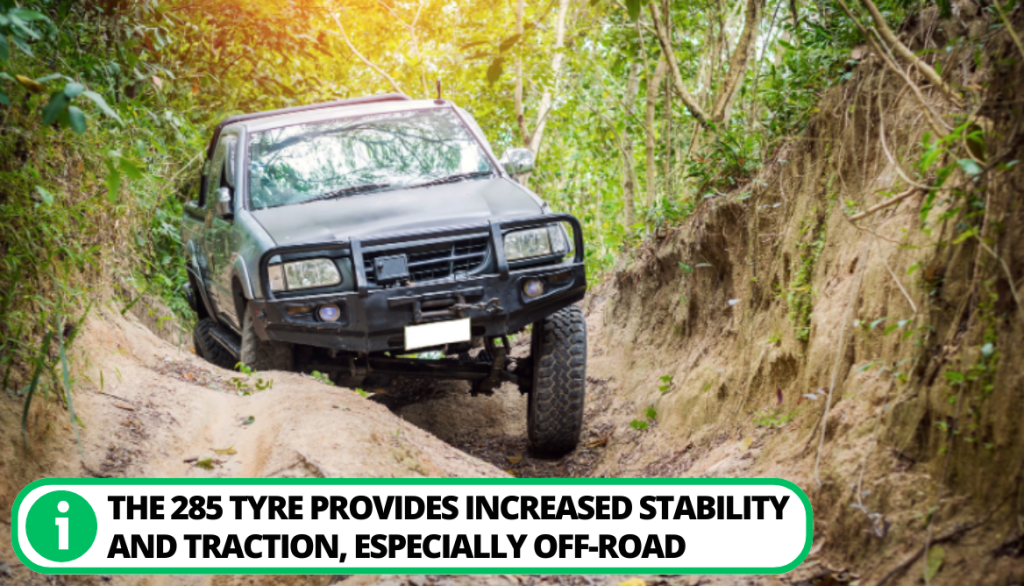
The 265 tire is narrower compared to the 285 measuring 20 mm less. The wider tire width of the 285 provides improved stability and traction, especially in dry conditions and off-road terrain.
Winner: The 285 emerges victor in the width battle due to better traction control.
2. Gas Mileage
Fuel economy is an important consideration for many drivers. Narrower tires with lower rolling resistance tend to provide better gas mileage. The 265 tire, being narrower, has less rolling resistance compared to its counterpart. This means that the 265 tire offers better fuel economy, allowing you to travel further on each tank of gas.
Winner: The 265 stands tall with improved fuel efficiency.
3. Carload
If you have a vehicle that needs to handle heavier loads or towing, the load capacity of the tires becomes crucial. The 285 tire has a higher load-carrying capacity compared to 265 light truck tires. This makes it the better choice for vehicles that require the ability to carry heavier loads.
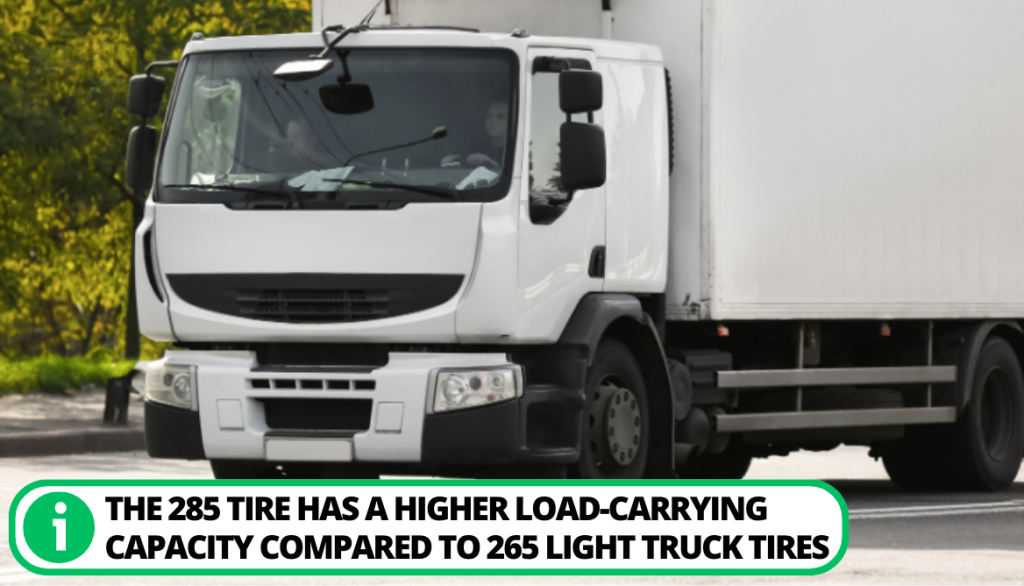
Winner: 285 tires clearly win here as they are most suitable for bulky jobs.
4. Grip
The tire’s width affects grip and stability on the road, particularly during acceleration. The wider tire size of the 285 provides more surface area in contact with the road. This in return results in better stability and improved rolling resistance during acceleration. This is especially beneficial for larger vehicles like trucks or SUVs.
Winner: If you drive heavy trucks, then 285 tires should be the preferred choice.
5. Handling
The 285 tire generally offers better handling than the 265 due to its wider contact patch. The increased surface area enhances grip and traction, resulting in improved cornering stability and responsiveness.
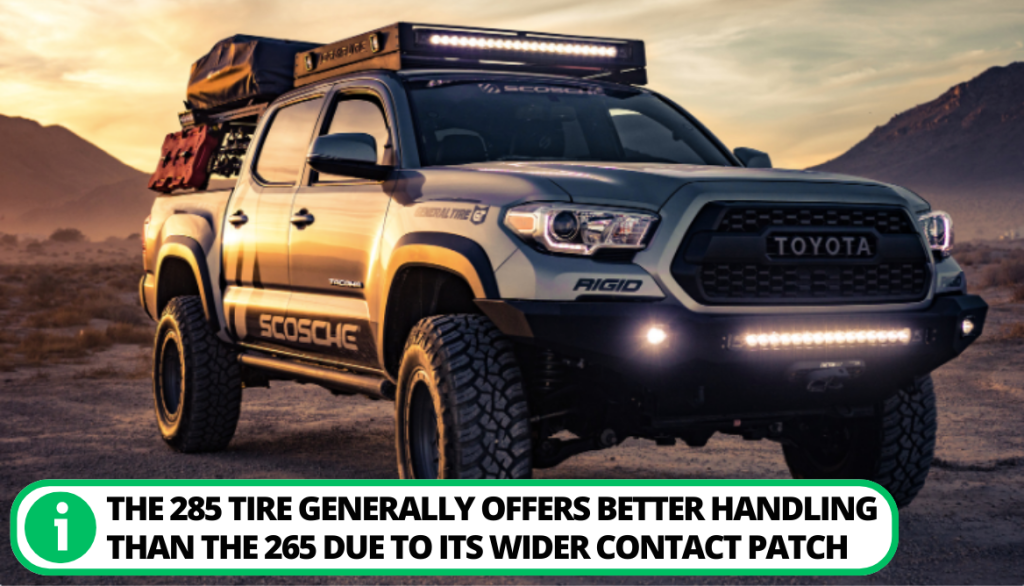
Winner: For HTV (Heavy transport vehicle), 285 should be opted for better handling. However, for smaller rides, 265 can also serve well.
6. Per Mile Revolutions
The revolutions for the tire size of 265 mm are 638, whereas, for 285 mm tires, they are 615. The former tires come on top in this category as it has a lower RPM.
This much RPM offers better fuel average and efficiency. It’s meaning you can save on gas and enjoy improved engine efficiency.
Winner: 265 mm tire wins here due to much lower per-mile revolutions.
7. Preferred Readings for Speedometer
When compared to the 265 mm tires, these readings for the 285 tires are 3.7% lower. This implies that if you choose the 285 tires, your speedometer will show a slightly greater speed than your actual speed. The 265 tire is the superior option for accurate speedometer readings.
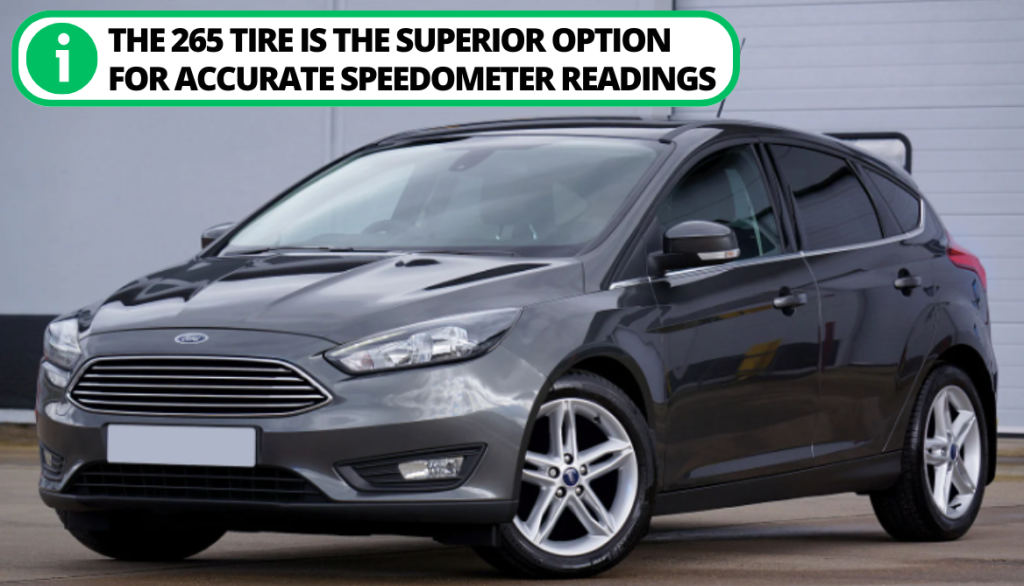
Winner: The speedometer reading for tires of 265 mm is superior.
8. Notable Variance for Speed
The only difference in speed between the two tires is that the 285 moves slower than the 265 mm. If you value quick acceleration, the tires having 265 mm size are the clear winners due to their higher speed variance.
Winner: If you consider higher variance, then 265 is a wiser choice.
9. Lift
While comparison with tires of 265 mm, the 285 has a bigger circumference and width. This larger size gives the car’s body roughly three inches of elevation, giving it a more heightened appearance.
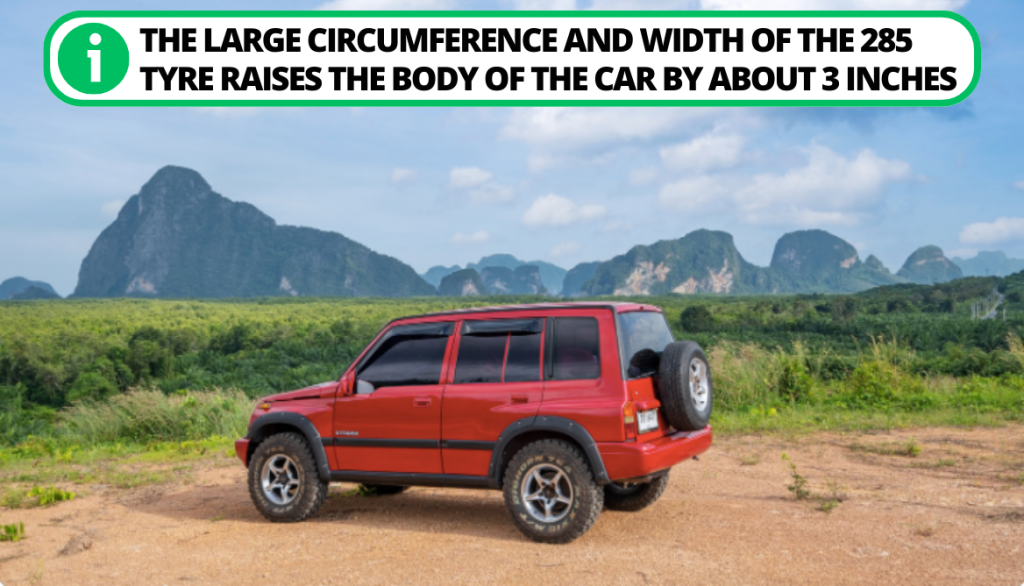
Winner: 285 tires stand tall in this final category!
The Best Way to Read 265 75R16 and 285 75R16 Numbers on Tires
Tire sizes such as 265 75R16 and 285 75R16 relate to the width of the tires:
- The numerals 265 and 285 represent the tire width in millimeters.
- It is vital to remember that the width measurement comprises the entire tire from one sidewall to the other. Not only the part that makes contact with the road (known as the contact patch).
- Furthermore, the numerals on the sidewall of the tire can be used to determine the tire size.
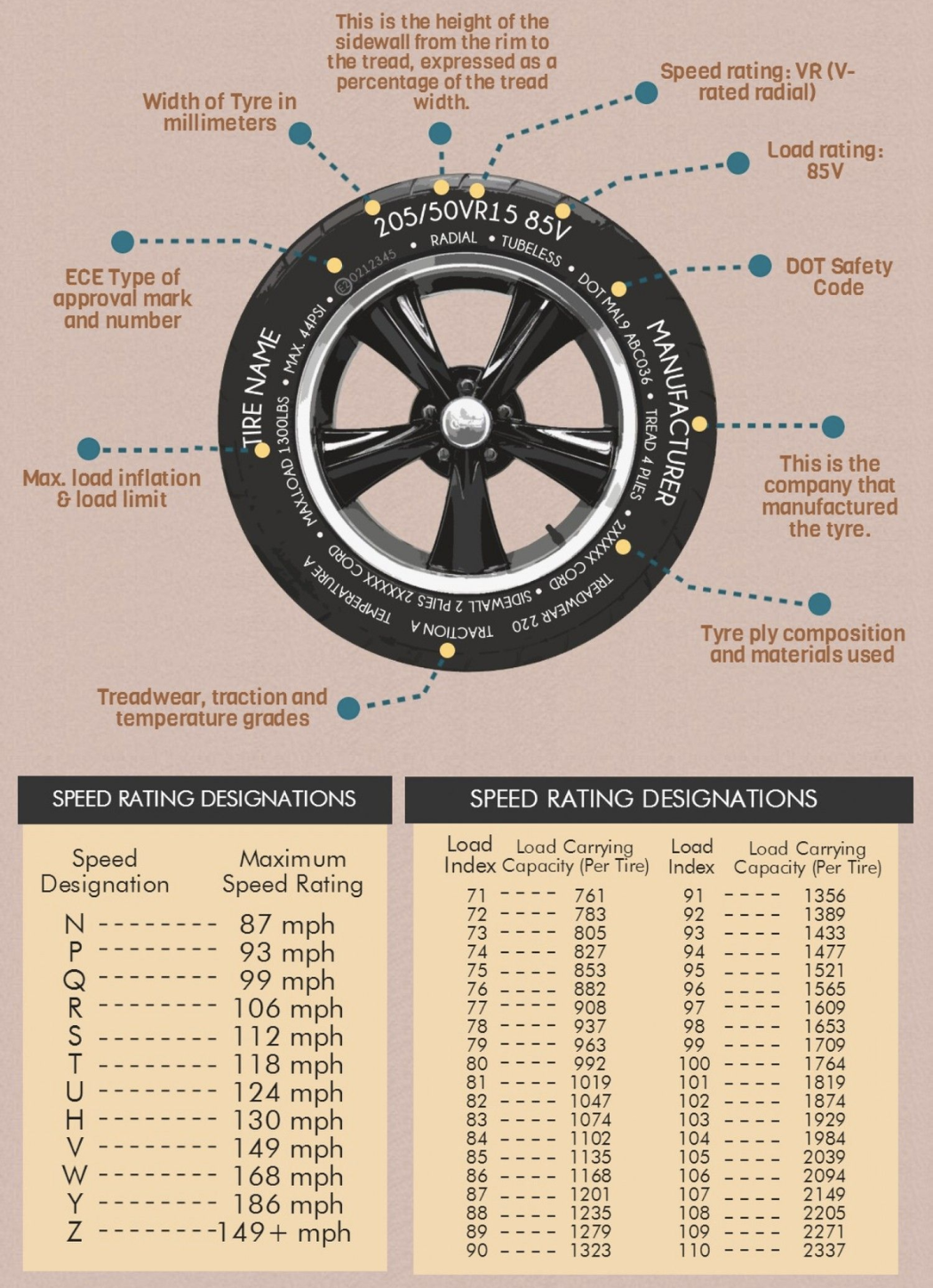
Refer to the picture below as it also shows the passenger car tires indication as P. However, this picture of 185 tire size is just for example purposes.
Choosing the Perfect Tire Width
It may not be evident how wide of a tire your car needs, but getting it properly is essential to avoid issues. There will be noticeable effects, for example, if you switch from a 14″ original equipment (OE) tire to a 17″ aftermarket tire:
- The car’s body will first lift 3 inches off the ground, which might have an impact on a variety of factors like speed and stability.
- Second, the speedometer reading may be erroneous, affecting the car’s acceleration.
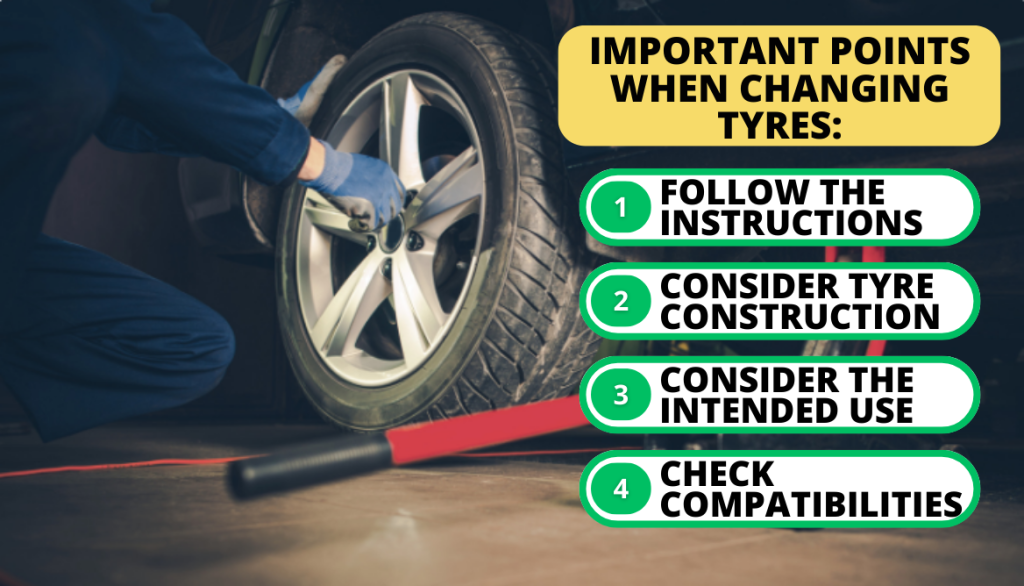
So the question is, how do you choose the proper tire width for your vehicle?
You can use a tire size calculator to determine the correct fit. This tool assists you in matching the rim size to the aspect ratio and width of the tire. It guarantees that the tire fits perfectly on your rims and maintains the same aspect ratio.
Moreover, there are important considerations when replacing tires:
- Follow the Manufacturer’s Instructions: Carefully read and follow the guidelines given by the tire manufacturer.
- Consideration about Tire Construction: Double-check that the construction for the internal side is made as per recommendations such as bias ply or radial.
- Consider the intended use: Evaluate your typical driving conditions, whether it’s highway driving, city commuting or off-roading.
- Check Compatibility: Ensure that the selected tire width fits within the wheel well and does not interfere with suspension components or fenders. Verify compatibility with your existing wheels to avoid any fitment issues.
By keeping these factors in mind and following the appropriate guidelines, you can choose the wheel that perfectly fits and gets the job done.
If you are interested in learning about summer and winter tires, check out this helpful video.
Our Verdict – The Best Fit for You
Our verdict goes in favor of 285 tires. While it is true that the 285 tires may have slightly higher fuel consumption compared to the 265 tires. But, there are several reasons why it stands out as the best choice in most cases. Such as:
- Load Capacity: RVs typically carry heavier loads due to their size and usage. The 285 tire offers a higher load-carrying capacity compared to the 265, making it a better choice.
- Grip and Stability: The wider tire width of the 285 provides enhanced grip and stability on the road. Especially during acceleration and while maneuvering a larger vehicle like an RV. This is particularly important for maintaining control and safety during long-distance trips.
- Handling and Control: Large tread blocks of the 285 tire contribute to improved handling and increased surface grip. This provides more confident control, especially in challenging road conditions.
- Customization: The larger size of the 285 tire offers the opportunity for customization. This provides around three inches of lift to the car’s body. This can be desirable for users who may want to adjust the height of their vehicle for specific purposes or preferences.
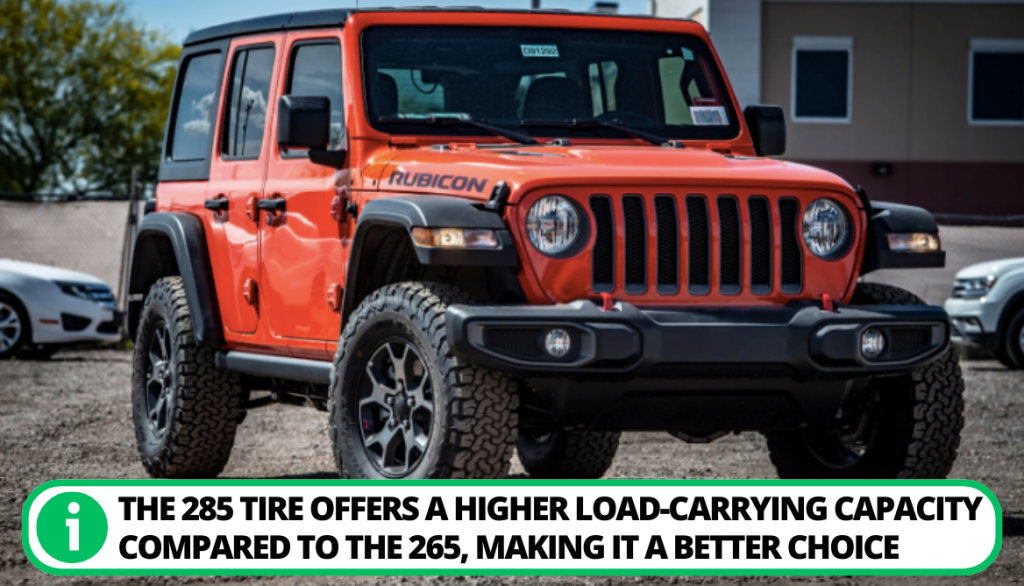
FAQ
Can I replace 275 tires with 265?
Yes, you can replace your 275 tires with either 265 or even 285 tires. However, it’s important to remember that if you choose to change tire sizes, you must replace all of your tires with the same size. Additionally, make sure that the new tires have the same aspect ratio and rim diameter as your current ones. If the rim diameter is different, it is not recommended to switch tire sizes.
What is the best wheel width for 285?
When it comes to the best wheel width for 285 tire, a general guideline is to match the wheel width to the tread width of the tire in inches. For example, if you have a tire size of 285/35-19 with a tread width of 9.9 inches, the ideal wheel width would be around 10.0 inches for that particular tire.
What size tire is 265 75R16 in inches?
A tire size of 265/75R16 translates to approximately 31.6 inches in overall tire diameter. This measurement includes both the height and width of the tire. It’s important to note that this size is approximate and can vary slightly depending on the specific tire model.
Is a 265 a 33-inch tire?
Not directly but if you consider a 16-inch rim, a tire with a width of 265mm and a 75% aspect ratio (height-to-width ratio) would result in a tire height of 33.4 inches.
Conclusion
The last say is that before choosing a tire for your vehicle, check out the compatibility, driving conditions as well as speed and load ratings.
If you prioritize fuel-efficient tires with a narrower width, the 265 may be the better choice. On the other hand, if you require a higher load capacity and better handling, the 285 tire emerges as the recommended option. Additionally, consider using a tire size calculator to match the appropriate tire size.
Do you have any experience with 265 or 285 tires? Which factors are most important to you when choosing a tire size? Share your opinion in the comment section below!

I`m a current Law Enforcement Officer working within the Counterterrorism Bureau in New York State. I have been Camping for over 20 years. My styles of camping include tent, car, truck, van, and RV travel trailer. I have a YouTube channel where I teach all types of camping with an entertaining method: https://youtube.com/@TheSmallsRVAdventures



![Top 8 Best RV Cabinet Latches [Detailed Reviews]](https://camperlife.co/wp-content/uploads/2021/02/best-rv-cabinet-latches-768x514.jpg)
![Top 15 Best TVs for RV [Buying Guide]](https://camperlife.co/wp-content/uploads/2021/03/best-tv-rv.png)

![Top 7 Best Trickle Chargers For RV Battery [Buying Guide]](https://camperlife.co/wp-content/uploads/2021/07/best-trickle-charger-768x432.jpg)